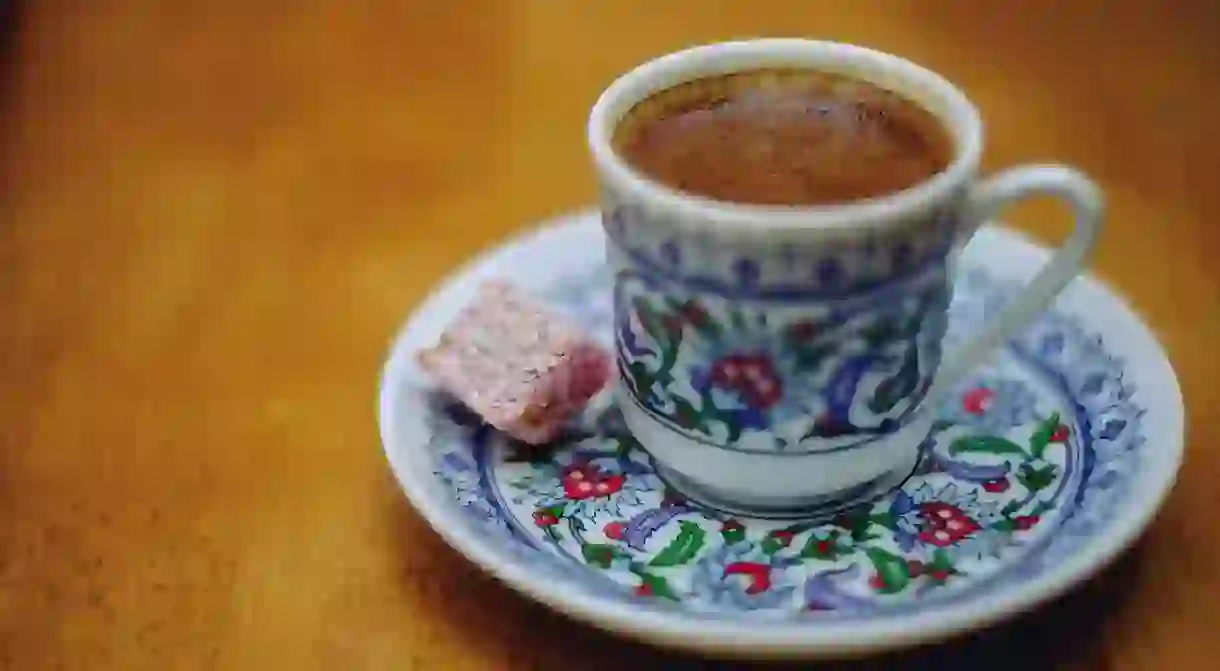The Quintessentially Turkish Guide To Drinking Coffee

When it comes to coffee, Turkish people prefer their brew dark, strong, and sweet. Even though coffee shops offering flat whites and cappuccinos have become quite popular in Istanbul, Turkish coffee is still the most traditional conclusion to a meal, or the perfect introduction to a deep conversation with friends. We took a look at the culture around Turkish coffee, how it’s made and served, as well as the infamous bouts of fortune telling.
How to Make Turkish Coffee
Turkish coffee is prepared in a cezve, a special small pot with a long handle that is traditionally made of copper. For one cup of Turkish coffee, combine one cup of water (the size of the coffee cup) and two full teaspoons of coffee. Since sugar is never added after the coffee is cooked, you have to add sugar into the cezve beforehand: two sugar cubes for very sweet, one for medium sweetness, and none for those who like their coffee bitter. As the coffee comes to a boil, let the foam rise and take it off the heat right before it’s about to spill – this will guarantee that your coffee will have lots of foam. Traditionally, Turkish coffee without foam is simply unacceptable. Serving the coffee with a glass of water (and something sweet, preferably Turkish Delight) is also part of the ritual.

How Turkish Coffee is Served
Turkish coffee is served in small cups, most comparable to espresso cups. However, unlike the espresso shot, the Turkish counterpart is supposed to be drunken slowly, enjoying every sweet sip until you get to the bottom, where the grounds are too think to be consumed. Quite the social affair, like so many things in Turkey, coffee drinking involves talking and sipping, enjoying the coffee while also enjoying the conversation. It’s also important to note that, due to its special brewing technique and tradition, Turkish coffee has made its way onto the UNESCO World Heritage list.

Fortune Telling
Turkish coffee cup reading is a very popular method of fortune telling in Turkey, where the shapes left by the coffee grounds represent the past and future of the drinker. You’ll know when you’re done drinking your coffee, because a thick layer of grounds will appear at the bottom; when this happens, cover the cup with the saucer, make a wish, and turn it up-side-down. Once the cup has cooled, the shapes the coffee grounds leave on the side of the cup can be read, usually at a Falcı (fortune teller), many of whom can be found all around the city (some better than others).

Where to Drink The Best Turkish Coffee
If you want to make Turkish coffee at home, make sure to buy a cezve and some Turkish coffee cups at a store like Paşabahçe. Some of the best coffee is made by Kurukahveci Mehmet Efendi, which is available at every supermarket. However, if you’d rather someone else prepare the coffee for you, Fazıl Bey’s Turkish Coffee on the Asian side comes highly recommended. Located in the lovely Kadıköy Market, with crowds going to and fro, Fazıl Bey’s nostalgic music and wooden furniture seem to have remained unchanged since its establishment in 1923. Make sure to also try their Turkish coffee with damla sakızı (mastic) while you soak up the nostalgia in this classic Turkish coffee shop.














